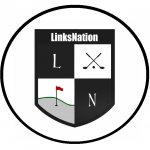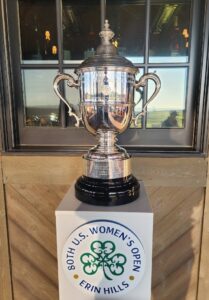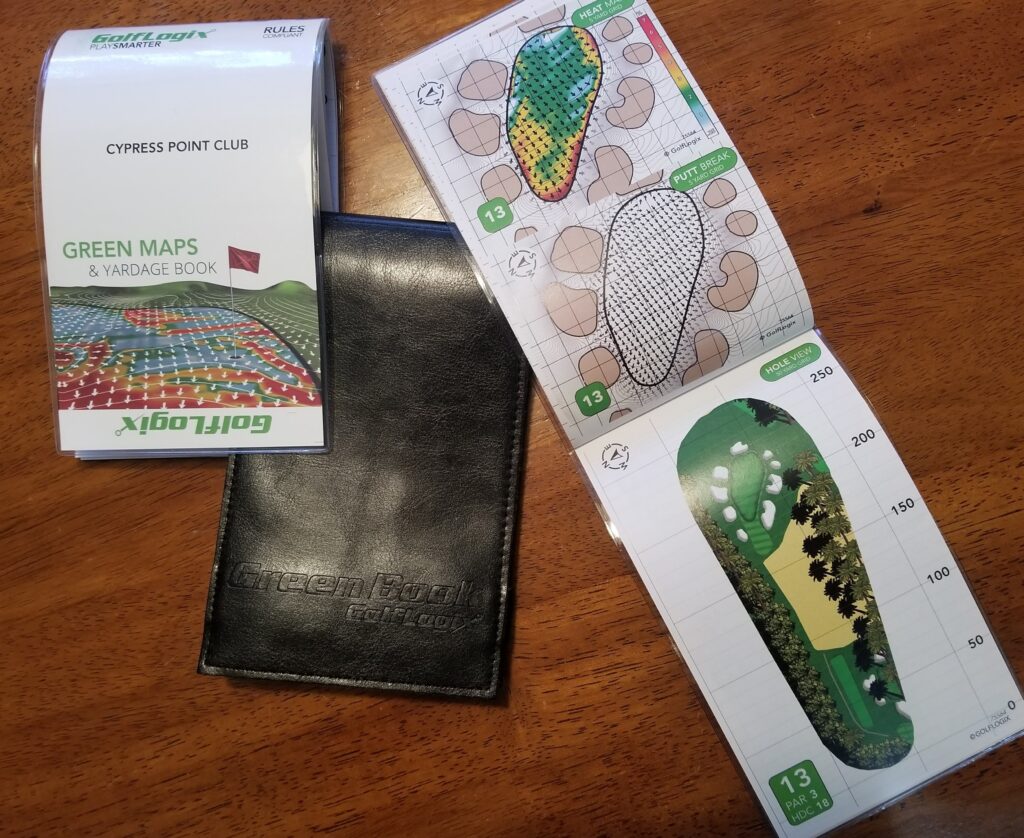
Golf greens reading books have been around for several years on tour, but how many amateurs have ever considered that their green reading skills have as much to do with their inability to make putts as their choice of flatstick or their stroke itself.
Other than when I did some caddie work in competitive events, the thought of using a book to read greens seemed foreign to me. So, when the folks from GolfLogix approached us about doing a review of their new Greens Maps & Yardage Books, I hesitated – then thought, let’s check out some books of a few of the most unique greens complexes we’ve experienced and put them to the test. We acquired a combination of renowned top 100 private clubs – California Golf Club, Cypress Point Club, Seminole, and a couple of the finest local public-access courses like – North Palm Country Club and Osprey Point here in South Florida.
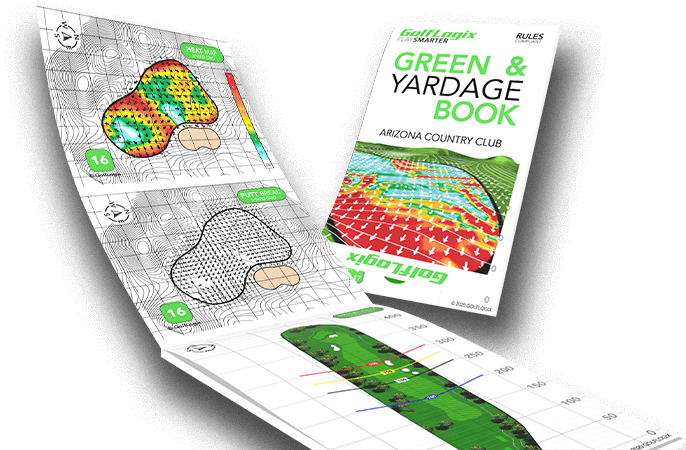
GolfLogix has 216,000 greens mapped around the world, of which perhaps no par 4 on earth is more exquisite than the ninth hole at Cypress Point (above). Each Greens Map & Yardage Book also includes complete hole diagrams from tee to green.
Leather Covers
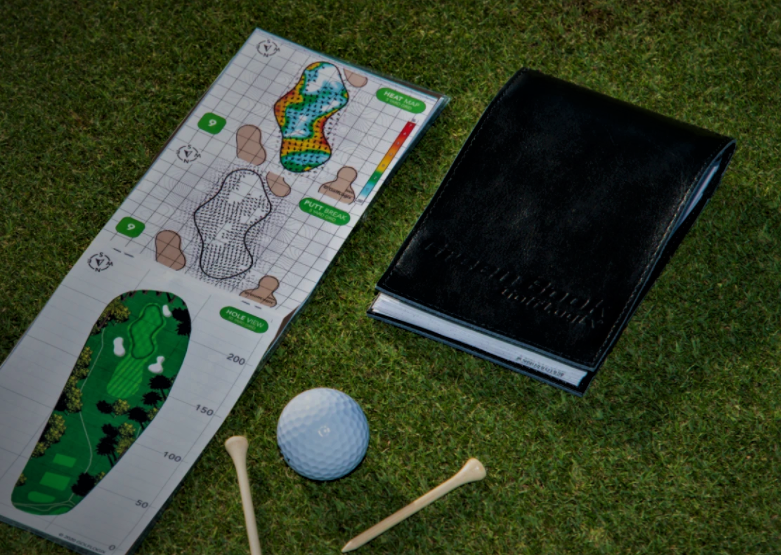
Feel like a Tour Pro and protect your Green Book with a new genuine leather Green Book cover.
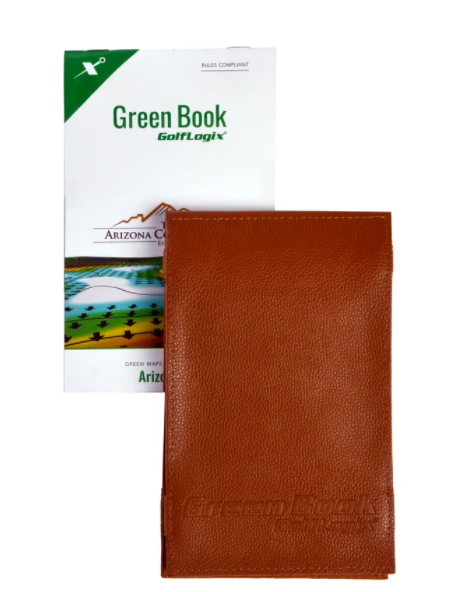
GolfLogix leather covers are available in black and brown, and fit perfectly in your back pocket with dimensions of 4 1/2 inches wide and 7 1/4 inches long. Leather cover $29.95
Green/Yardage Book Features:
– 14,000 Courses precisely mapped with centmeter accuracy on the greens plus 3D yardage book fairway imagery.
– Heat Map shows precise green slopes which also provides where to aim to get your approach shots close.
– Putt Break view boosts confidence through a proper read enabling a committed stroke.
– Hole View shows hazards and yardage increments for better course management.
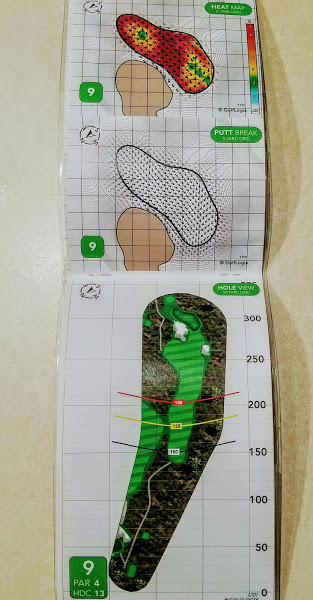
Here’s a zoom view of the Putt Breaks imagery of Cypress Point’s ninth (above).
Testing: Our maiden voyage with the GolfLogix book was at North Palm Beach Country Club, a Jack Nicklaus signature design that sits on an elevated sand ridge along the Intracoastal waterway (about 2 miles south of Seminole Golf Club) and is known for having some of the most undulated greens in the area. My initial thought was if everybody carries around a greens book it might take forever to play a round of golf. For me, it took a hole or two to get used to using the book. Just the process of finding the hole I’m playing and getting the correct orientation of the green to where my ball was positioned in relation to the hole location. By the second hole, my focus was locked-in as I faced a tricky 8 footer for birdie and was baffled by the read, specifically the grain influence vs slope. I used the Putt Breaks diagram, trusted the read, and poured it in. Huh, that seemed easy, dare I say it felt almost like cheating, but that’s not for me to decide – this was a test in progress . . .
I continued to use the book throughout the round and anytime I second-guessed its directional suggestion, it proved me wrong.
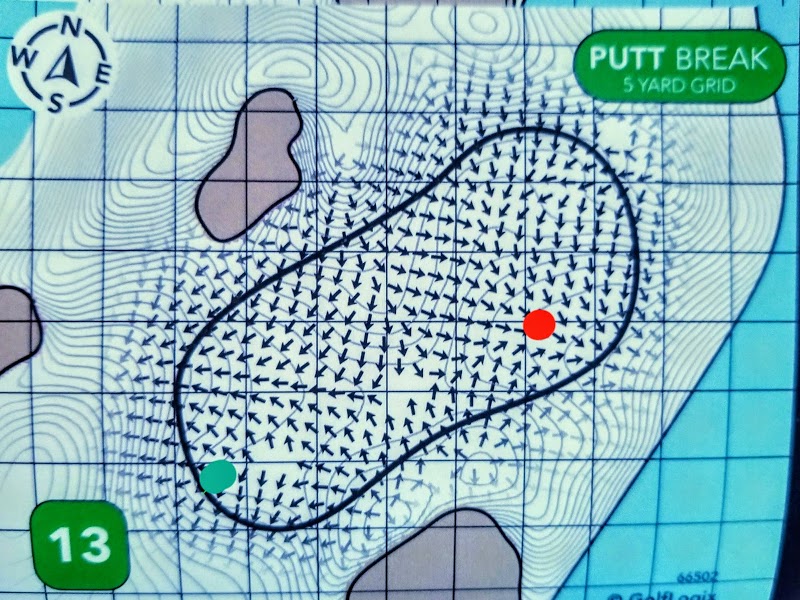
On the par 5 thirteenth, I faced this putt (above), from the green dot where the ball settled in two just inside the collar, leaving a lengthy eagle putt of approximately 65 feet. There’s an obvious falloff that dives towards the water on the right about 45 feet from my starting point, but the bigger question was the first two-thirds of the putt. The diagram shows where my ball lies (green dot) and shows the front bunker ridge will influence the ball right to left initially before the falloff drags to the ball right as it loses speed towards the hole (red dot). So rather than playing the putt way out to the left to start, I aimed the putt just off the left edge of the cup. By the time the ball rolled out to the falloff, it was about 3 or 4 feet left of the cup. Over the last 15 to 18 feet it dragged right down the slope and tumbled into the cup. Eagle 3. Thank You GolfLogix. As I told my playing companions that day, this review is writing itself.
Obviously, the player must still interpret what they see on the diagram and execute the putt, but it does simplify things greatly. My suggestion to golfers who chose to use a greens book is to get to up to your spot on the green quickly and do the necessary studying without interrupting the flow of play. Once you get the hang of it, it may actually speed up your time spent on the greens and shave a few strokes off your score.
If you like making putts, check out GolfLogix Green Maps/Yardage Books – MSRP $40 (and leather cover $29.95). For more information: https://www.golflogix.com/
